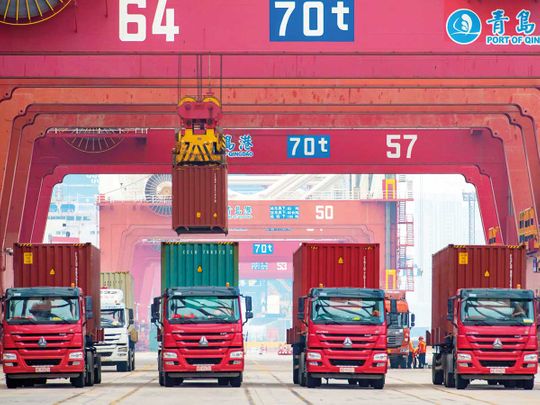
Beijing: China’s efforts to shore up sagging economic growth are leading to a resurgence in indebtedness, underlining the challenge President Xi Jinping’s government faces in curbing financial risk.
The nation’s total stock of corporate, household and government debt now exceeds 303 per cent of gross domestic product and makes up about 15 per cent of all global debt, according to a report published by the Institute of International Finance. That’s up from just under 297 per cent in the first quarter of 2018.
The real growth of the world’s second-largest economy slowed to a record-low pace in the second quarter amid the negative effects of the trade war with the US as well as longer-term factors such as its ageing society. In a bid to manage the slowdown, the government has tried to funnel credit to the private sector and encourage domestic consumption — at the price of higher debt.
303 %
of GDP is China’s debt of corporate, household and government stockThat’s a turnaround from 2018’s sweeping campaign to curb off-balance sheet corporate borrowing from the so-called shadow banking sector, a signature campaign by Xi. While that effort did have some success, borrowing in other sectors offset it, according to the IIF. The marked slowdown in the economy also affects the burden that debt places on the economy.
With nominal GDP growth now running at about 8 per cent, far outpaced by the growth in aggregate financing at about 11 per cent, means that the debt-to-GDP ratio is bound to increase, according to Raymond Yeung at Australia & New Zealand Banking Group Ltd.
15 %
share of global debt that is equivalent to China’s liabilitiesReal gross domestic product rose 6.2 per cent in the April-June period from a year earlier, a further slowdown compared with the 6.4 per cent expansion in the first quarter. For now, accelerated debt growth appears to be a price policymakers are willing to pay in order to brake the slowdown.
Policymakers have beefed up fiscal support, including easing the rules for using government debt in some infrastructure projects. The State Council, China’s cabinet, said last month that banks should try to sell more than 180 billion yuan ($26.2 billion) of bonds to fund small firms in 2019 as well as lend more to the manufacturing and services sector.
— Bloomberg












